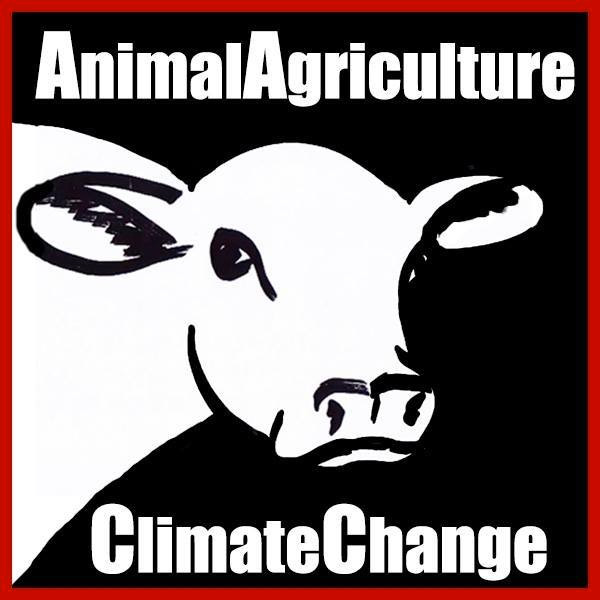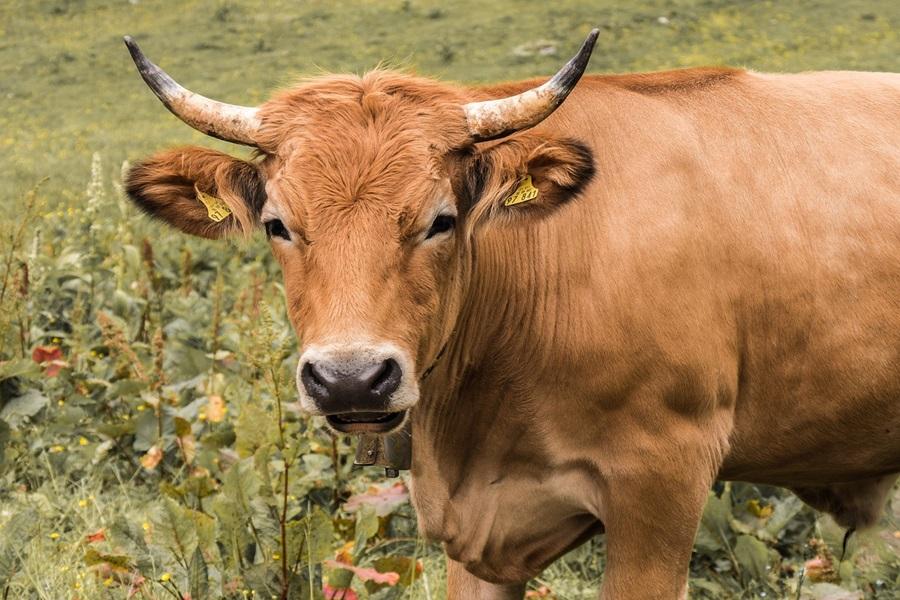The pet food industry must continue to adapt if it is to become sustainable and it’s clear that plant-based and cultivated meat options require investment.
When the production of the first foods specifically formulated for pets began in the 1800s, the pet food industry was born. Since then, this industry has seen substantial growth, and is today worth $57 billion U.S. dollars.The conditions under which pet food is produced has significant environmental implications, leading to questions about its long-term sustainability, and the future of the pet food industry.
Just as an increasing human population is placing strain on our own food production and contributing to the global climate crisis, so is our increasing pet population. In the United States, for example, 66 percent of households now own a pet; an increase of 10 percent since 1988. Supplying the amount of food required to feed these animals is no easy task.
As meat and meat byproducts are some of the most common ingredients in pet food manufacturing, the pet food industry relies heavily on animal agriculture, an industry that is responsible for 16.5 percent of global greenhouse gas emissions. As with human food production, meat-based pet diets require more energy to produce, are responsible for greater land usage and have a higher water footprint than plant-based diets.
In a study carried out to investigate the environmental impact of cat and dog food production, it was found that pet feeds containing meat are responsible for 25-30 percent of the environmental impact of animal agriculture.
This raises questions around the sustainability of the pet food industry and suggests changes are needed if we are to be able to continue providing sufficient food for our ever-growing number of pets. Potential solutions to reduce the environmental impact of the pet food industry include using human food waste in pet food, using insect protein as an alternative to animal protein, and more investment in developing plant-based pet foods and cultivated meat pet foods.
How big is the pet-food industry?
In 2022, the global pet care industry was worth over $235 billion U.S. dollars. The pet food market takes one of the largest shares of this; in 2022, pet food sales worldwide reached $134 billion.
Following an increase in pet ownership over the last few decades, and a particular surge during the COVID-19 pandemic, it’s currently estimated that around 86.9 million U.S. households have at least one pet. The majority of these are dogs and cats, but less commonly kept pets include birds, horses, fish, reptiles, poultry, rabbits and other small mammals. The pet food industry provides for all of these, and is expected to produce 59.5 billion kilograms of food in 2028.
How the pet food industry fuels meat industry profits
Many of the main ingredients in cat and dog food are animal-derived, creating substantial links between the pet food industry and animal agriculture. Initially the pet food industry only sourced its ingredients from byproducts of the meat industry, but with increasing demand for higher-quality and premium brands of pet food, this is no longer the case. It is estimated that up to 30 percent of the animals raised and killed by intensive agriculture in the U.S. may be intended specifically for pet food production.
Can you feed your pet a plant-based diet?
The human plant-based food market has seen significant growth in recent years and is predicted to be worth $35.9 billion by 2033. As pet owners become more aware of the environmental impact of animal-based food products and the animal welfare issues involved, many are faced with a dilemma about what to feed their pets. Different species of animals have unique nutritional needs, so providing some of our pets with adequate nutrition on a plant-based diet can be a challenge.
Dogs are omnivorous animals, meaning they would naturally consume both plant and animal matter. This makes many cautious about the idea of dogs being fed on purely plant-based diets. Yet there is evidence that it can be done safely however many veterinarians are still reluctant to encourage owners to switch their dogs to plant-based diets because of how easily essential nutrients can be missed.
A completely vegan diet becomes even more difficult when it comes to cats. Cats are unable to produce some proteins themselves and have to absorb them from their diets. An example of this is taurine, which if missing from a cat’s diet can lead to a condition known as dilated cardiomyopathy. However, this does not make it impossible for cats to live healthily without consuming animal sources of protein, though it requires a very specifically formulated plant-based diet. Still, some cat owners have reported success: a recent study surveyed cat owners and found those feeding their cats a vegan diet reported fewer vet visits.
Is cultivated pet food the future of the industry?
One potential alternative in pet food manufacturing is using cultivated meat. Cultivated meats, also known as lab-grown meats, are biologically the same as animal meat and are produced by removing a small sample of stem cells from an animal, and growing and developing these cells until usable meat is grown.
In one study carried out to investigate the market potential of cultivated meat in pet foods, it was found that although only 32.5 percent of people would consider eating cultivated meat themselves, 47.3 percent would be willing to feed cultivated meat to their pet. The main concern raised from owners around feeding cultivated meat to their pet was whether it was nutritionally complete, suggesting they would be open to it as long as they could be assured it would still provide their pet with the essential nutrients they need. Indeed, cultivated pet food companies believe their food would be even healthier, by limiting potential allergens and contaminants.
When producing cultivated meats, a key challenge faced by companies is achieving regulatory approval. Contrary to what you might think, cultivated meat for pet food is more tightly regulated than cultivated meat for human consumption. Since animals are eating the same product every day, they are completely reliant on it for the nutrients it provides.
Another issue is found in its cost. Although we’ve come a long way from the first lab-grown burger that cost $330,000 to produce, cultivated meat is still very expensive. Even with large-scale production, it would cost approximately $63 to produce one kilogram of cultivated meat, compared to one kilogram of beef that in 2022 cost under six dollars.
Is plant-based dog food really healthier?
If not done carefully, feeding a dog on a plant-based diet can easily lead to them missing out on essential nutrients. But if it is done correctly, a plant-based diet can even be healthier than a more typical meat-based diet. This was demonstrated in a study carried out by Professor Andrew Knight at the University of Winchester in 2022. The study found that dogs fed on a nutritionally adequate vegan diet suffered less health issues than those fed a diet containing meat.
Understanding pet nutritional needs
Pet food is any food specifically produced to meet a cat, dog or other pet’s nutritional needs. But there are limited regulations around the precise nutritional provision of a manufactured pet food. The Federal Food, Drug and Cosmetic Act requires that pet foods be produced under sanitary conditions, not contain harmful substances, be safe for the pet to eat and be accurately labelled.
These labels, however, may not have much meaning to owners. Without in-depth knowledge of the specific nutritional requirements of their pets, many pet owners are left unsure about the extent to which they are actually meeting their pet’s nutritional requirements. A feed can be labeled as “complete” or “balanced,” two very different terms not necessarily understood by pet owners. The Association of American Feed Control Officials considers a complete feed to be one that contains all the nutrients the animal requires, and a balanced feed to be one that contains the correct balance of nutrients, but not necessarily all the nutrients the animal needs. Missing out on essential nutrients or being fed incorrect portion sizes because their owners don’t completely understand what they are feeding their pets, can have impacts on an animal’s health.
Common health issues related to diet
With as many as 50 percent of dogs overweight in North America, obesity is one of the most prevalent health issues in dogs today. Although physical exercise is important in the management of obesity in pets, a healthy diet and correct portion control are considered the most important factors. Other common diet-related health issues in dogs include skin issues if their diet is lacking in essential fatty acids, or pancreatitis due to high amounts of fat in their diet.
Prescription diets and veterinary recommendations
The majority of veterinary organizations, such as the British Veterinary Association, remain reluctant to endorse vegan pet food, and feel that more robust research is required. Although there is now evidence that vegan diets may be a healthier option for our pets, many feel more research is needed into the long-term impact of plant-based diets on an animal’s health.
Prescription diets are recommended by veterinarians for pets suffering from a range of health conditions. Because of the lack of research into the long-term effects of being fed on purely a plant-based diet, there are currently no plant-based prescription diets for dogs or cats.
The bottom line
The future of the pet food industry isn’t all that different from our own food industry. While the pet food industry is a lucrative one, it also must continue to adapt if it is to become sustainable. What is clear is that there is a need for more humane food systems with less harmful environmental impact. Plant-based and cultivated meat pet food options require investment, just as they do in the human food market.
Original source: https://sentientmedia.org











